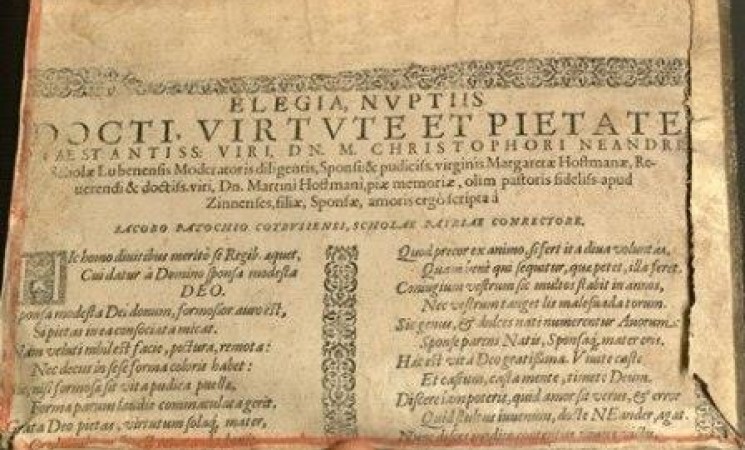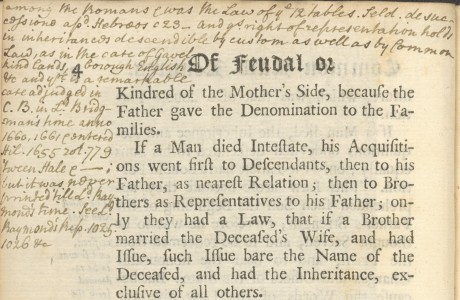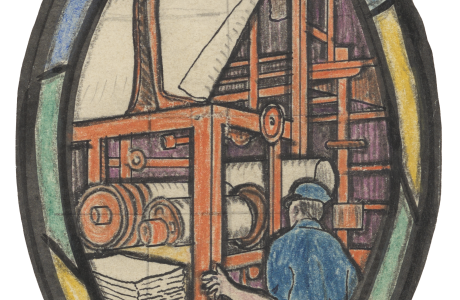Puzzles: Wedded bliss in the scrap heap

Forget little bottles of bubbles or bags of candy, couples getting married in early-modern Germany printed books to celebrate the wedding.
This interesting piece, a poem likely from such a book, comes to us as part of the binding for a volume of two commentaries on Roman law published in Lyon in 1590. The sheet with the poem is simply the top of the many sheets of paper pasted together to form the board for the back cover (appropriately called ‘pasteboard’). It is only visible because the paste-down, paper that would normally cover the folded edges of the leather binding, is missing.
The binding is alum-tawed skin with blind stamping and rolls, that is, the same style seen in the Reflections on Bindings Exhibit, making it contemporary to the printing. This is an important detail in trying to find information about the poem, since the inscription on the front, dated to February, 1676, could lead one to think that the book was bound on that occasion and so hamper investigation.
Despite missing most of the poem, this scrap of printer’s waste contains a lot of information to try and solve the puzzle it presents. We have four personal names and three place names:
- Christoph Neander (groom), head of the school in Lübben
- Margaret Hoffman (bride), daughter of Martin Hoffman, late pastor of a church in Zinna
- Jacob Patoch (author) of Kottbus, head of Scholae Patriae
All of the towns listed are in what is now eastern Germany (mostly south and east of Berlin). Tracking the people named proves harder – only the groom appears to have left a trace. He may be the Christoph Neander who served as a professor of Moral Philosophy at the University of Frankfurt (Oder) in the early 1600s. However, the scanty evidence prevents any firm identification.
As mentioned above, writing and publishing books celebrating a couple’s marriage was a common practice in early-modern Germany. Martin-Luther-Universität Halle-Wittenberg has a robust digital collection of 16th-18th century prints, and searching “nuptial” and then filtering for wedding books (Gelegenheitsschrift:Hochzeit) gives a sense of how wide-spread the practice was. Christoph and Margaret were in good company, but apparently printed too many copies, so that Jacob’s poem wound up in the scrap heap, and then on our shelves.
–
ANNA FRANZ, RARE BOOK FELLOW


